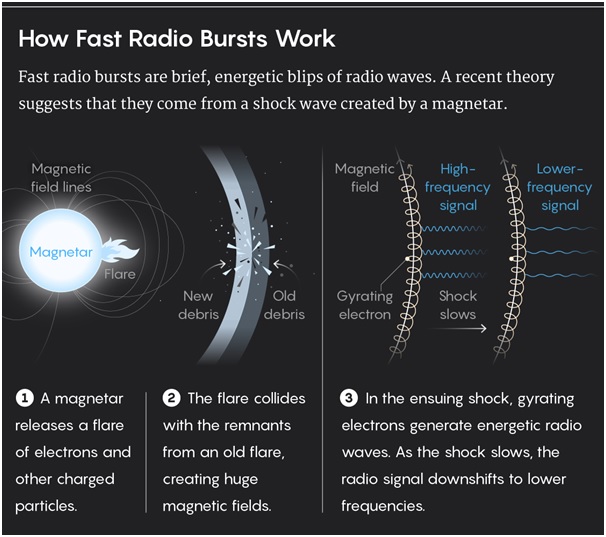

Context
Astronomers have recently reported a fast radio burst (FRB) whose characteristics are different from almost all other FRBs previously detected, except one.
About
Fast radio burst (FRB):
- FRBs are bright flashes of light that appear for a few milliseconds and then vanish.
- The phenomenon was discovered in 2007, by graduate student David Narkevic and his supervisor Duncan Lorimer.
- The source of these highly energetic events is a mystery, but clues as to their nature are being gradually collected.
- Since 2007, 140 more were discovered until June 2021. Their origins are unknown, and their appearance is unpredictable.
Fast radio burst 20190520B:
- The new source, Fast radio burst 20190520B, was detected with the Five hundred-meter Aperture Spherical radio Telescope (FAST) in Guizhou, China in May 2019.
- It emits frequent, repeating bursts of radio waves. And between bursts, it constantly emits weaker radio waves.
- Only one FRB has been previously observed to behave this way. Called FRB 121102, which was discovered in 2012.

How a Burst Bursts
- Astronomers have racked up roughly 50 separate theories to explain fast radio bursts — a tally that until recently outnumbered the events.
- The ideas include a variety of wild scenarios involving evaporating black holes, snapping cosmic strings, and even the propulsion systems of alien civilizations.

What is a magnetar?
- A magnetar is a neutron star, “the crushed, city-size remains of a star many times more massive than our Sun.”
- The magnetic field of such a star is very powerful, which can be over 10 trillion times stronger than a refrigerator magnet and up to a thousand times stronger than typical neutron stars.
- Neutron stars are formed when the core of a massive star undergoes gravitational collapse when it reaches the end of its life.


